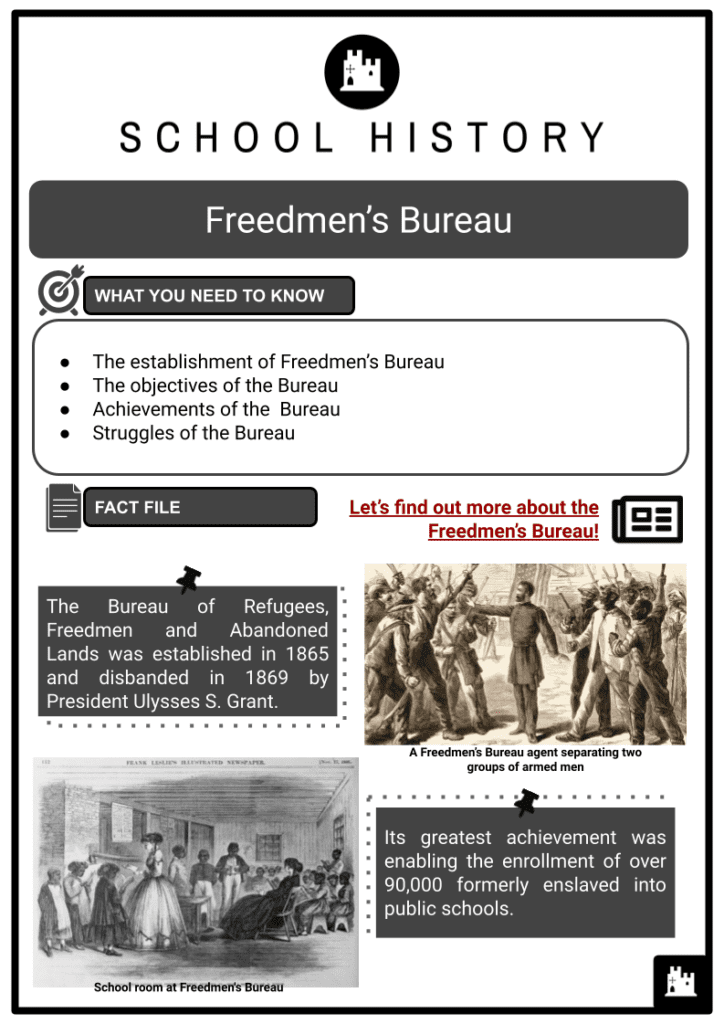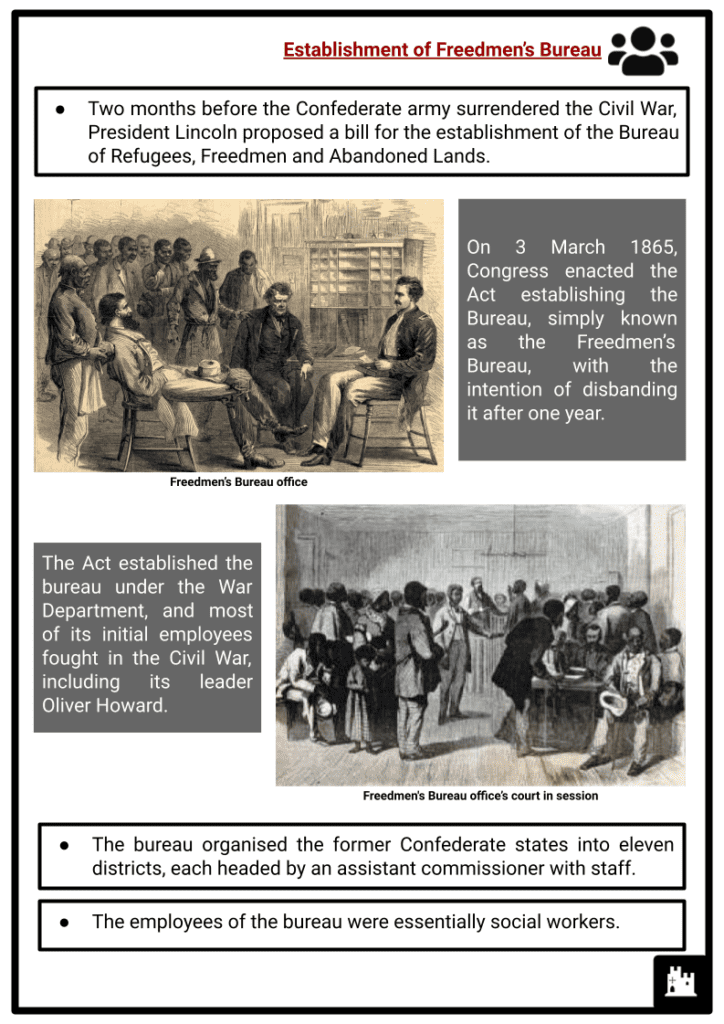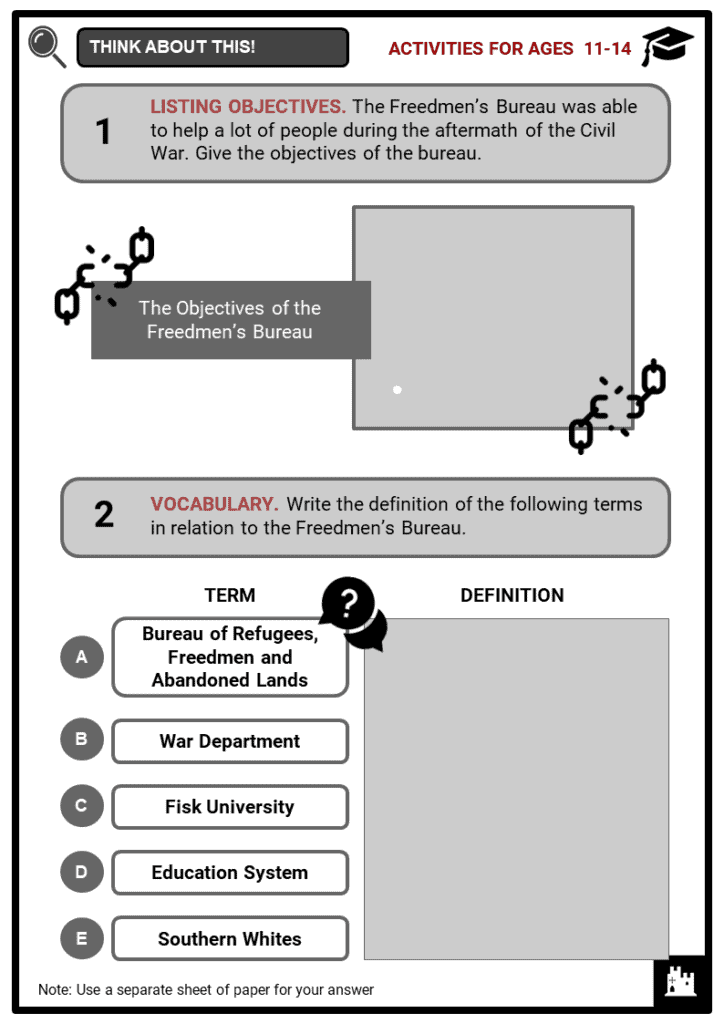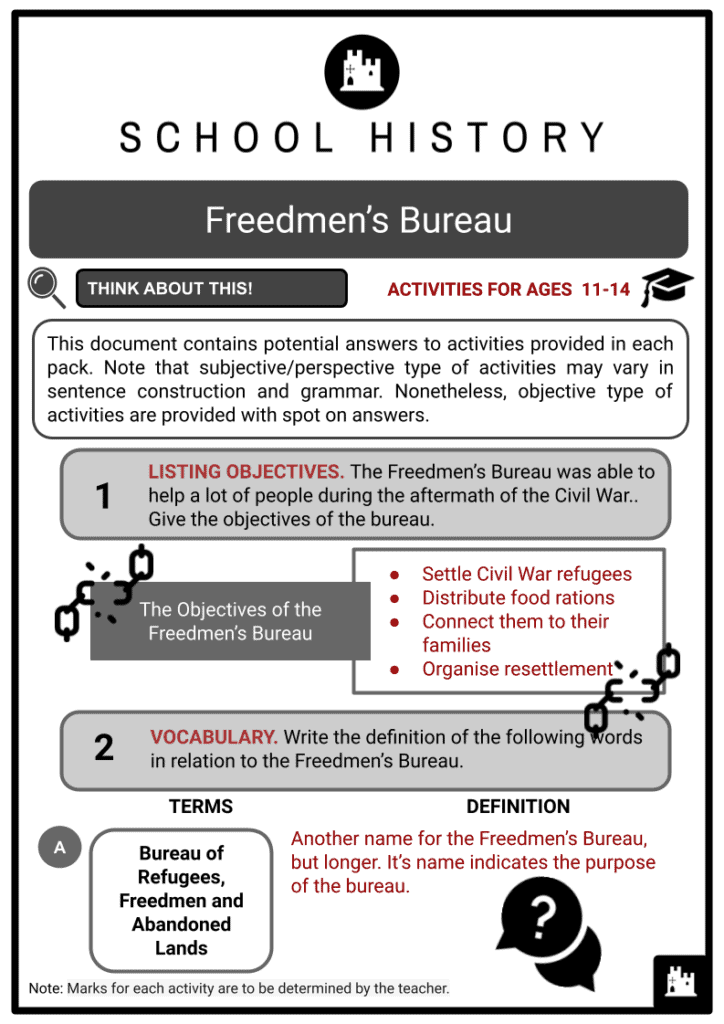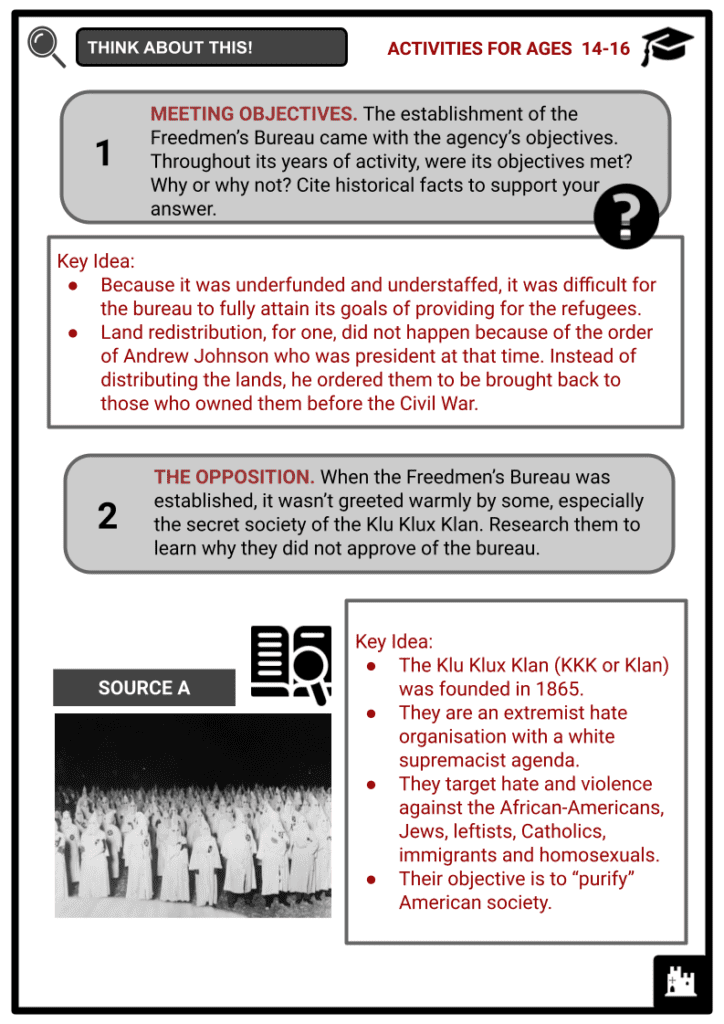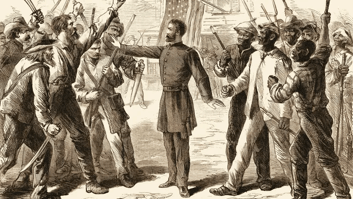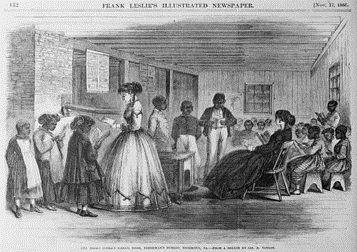Download Freedmen’s Bureau Worksheets
Do you want to save dozens of hours in time? Get your evenings and weekends back? Be able to teach Freedmen’s Bureau to your students?
Our worksheet bundle includes a fact file and printable worksheets and student activities. Perfect for both the classroom and homeschooling!
Table of Contents
Add a header to begin generating the table of contents
Summary
- The establishment of Freedmen’s Bureau
- The objectives of the Bureau
- Achievements of the Bureau
- Struggles of the Bureau
Key Facts And Information
Let’s find out more about the Freedmen’s Bureau!
- The Bureau of Refugees, Freedmen and Abandoned Lands was established in 1865 and disbanded in 1869 by President Ulysses S. Grant.
- Its greatest achievement was enabling the enrollment of over 90,000 formerly enslaved into public schools.
Establishment of Freedmen’s Bureau
- Two months before the Confederate army surrendered the Civil War, President Jackson proposed a bill for the establishment of the Bureau of Refugees, Freedmen and Abandoned Lands.
- On 3 March 1865, Congress enacted the Act establishing the Bureau, simply known as the Freedmen’s Bureau, with the intention of disbanding it after one year.
- The Act established the bureau under the War Department, and most of its initial employees fought in the Civil War, including its leader Oliver Howard.
- The bureau organised the former Confederate states into eleven districts, each headed by an assistant commissioner with staff.
- The employees of the bureau were essentially social workers.
- The initial objectives of the bureau was to settle Civil War refugees, distribute food rations to them, connect them to their families, and organise resettlement.
- In the year after the Civil War, the bureau continued distributing food rations to Black people, managing relationships between African-Americans and their employers, and further organising food rations for white plantation farmers seeking to feed their African-American workers.
Achievements and Struggles of the Bureau
- The bureau then evolved into a military court handling legal issues arising from the employment of African-Americans in the south.
- The most significant achievement of the bureau was the establishment of a public, state-supported education system in the south.
- Black people were keen to read and write and were working to establish schools in the south even before the bureau was established.
- Therefore they worked with aid organisations to build schools and secured $5 million from Congress.
- By the time the bureau was disbanded, it had managed to give over 90,000 African-Americans access to education.
- It directly led to the establishment of Fisk University in Nashville, Tennessee, Howard University in Washington D.C. and Hampton University in Virginia.
- The assassination of President Lincoln and the succession of President Andrew Johnson were among the most significant challenges to the bureau.
- The latter was not keen on supporting the bureau which resulted in it being understaffed and underfunded for the rest of its existence. Not all the bureau’s objectives were met, particularly land distribution.
- Additionally, President Johnson, conceding to pressure, vetoed a bill that would ensure the expansion and impact of the bureau’s powers. The southern whites were against the bureau and argued that it mobilised Black against white people.
- Although the objectives of the bureau were fair, the pressure received by Congress from white southerners had destroyed the bureau. Its lack of funds and staff resulted in the questioning of its effectiveness as it failed to protect Black people in the long run.
- Despite its struggles, the bureau became a foundation to bring about equality of law and labour in America.
Image sources:

